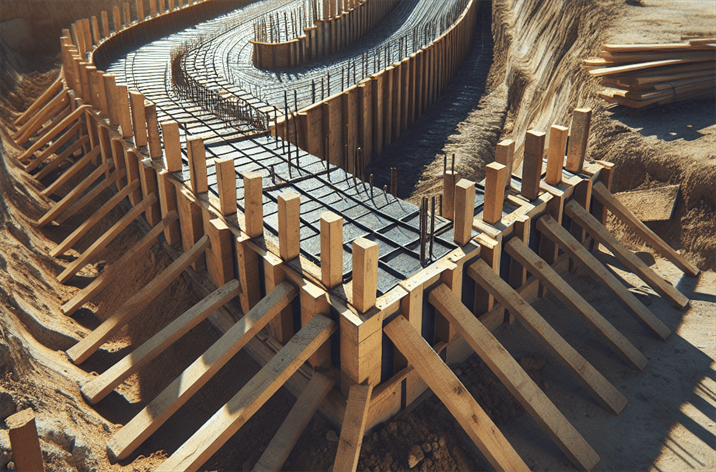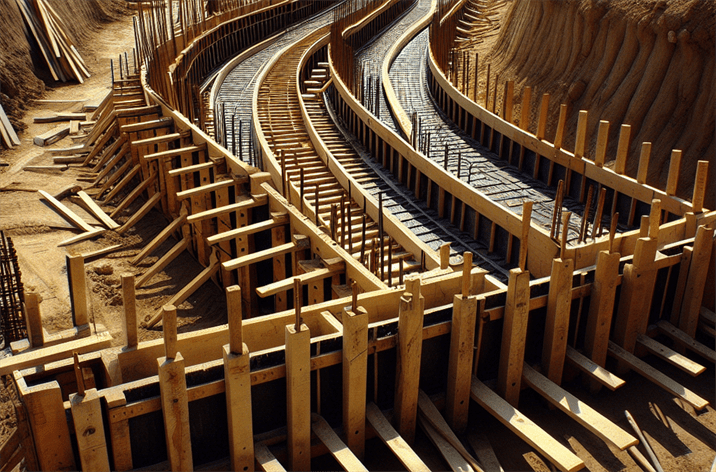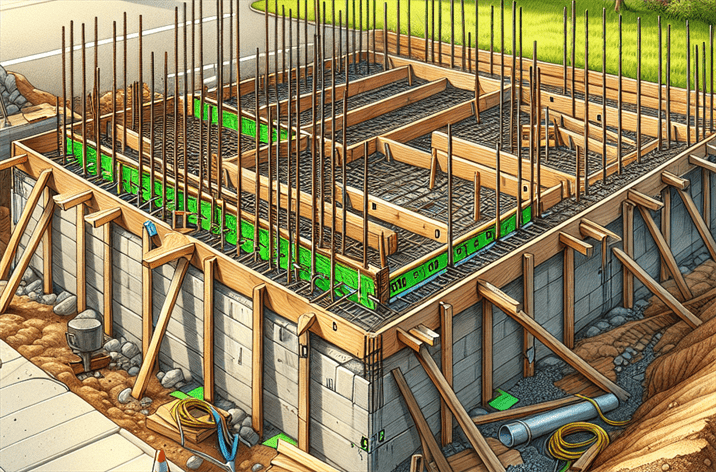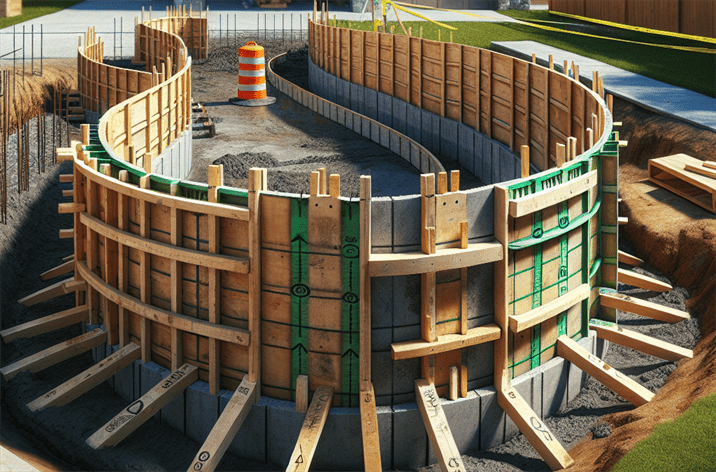How Wooden Construction Stakes Can Improve Jobsite Efficiency
Introduction
Did you know that using wooden construction stakes can significantly enhance job site efficiency? These unassuming tools play a vital role in project management and site organization, especially as the demand for construction efficiency continues to rise. With the construction industry increasingly focused on optimizing processes, the importance of reliable tools like wooden stakes cannot be overstated.
Wooden construction stakes are integral to various aspects of construction, from marking boundaries and aiding in layout to ensuring precise measurements. In an industry where every second counts and resources must be utilized wisely, these stakes provide a cost-effective, durable, and versatile solution. They not only streamline project workflows but also contribute to sustainability efforts, aligning with the recent trends in green building practices.
In this article, we will explore the myriad benefits and features of wooden construction stakes. We’ll delve into their historical significance, current applications, and how they can be effectively used to improve job site efficiency. For more details on the practical applications of construction stakes, explore our article on best practices for using stakes and lath in construction.
What Are Wooden Construction Stakes?
Definition
Wooden construction stakes are pointed wooden rods used primarily to mark specific locations on construction sites. They serve various purposes, including defining property boundaries, marking survey points, and providing reference lines for construction layouts. Made from durable materials, these stakes are designed to withstand outdoor conditions, making them a reliable choice for both short-term and long-term projects.
Historical Context
The use of stakes in construction can be traced back to ancient civilizations, where they were essential for establishing boundaries and ensuring accurate layouts. Historically, wooden stakes have been employed across various cultures, adapting to the needs of different construction methods. Over time, advancements in materials and technology have refined their design, but the fundamental purpose remains unchanged—providing clarity and precision in construction projects.
The Importance of Wooden Construction Stakes in Today’s Industry
In today’s construction landscape, the relevance of wooden construction stakes has grown due to several factors:
- Sustainable Building Practices: As the industry shifts towards eco-friendliness, wooden stakes made from responsibly sourced timber are increasingly favored for their sustainability.
- Demand for Project Accuracy: With the rise of complex construction projects, the need for precise measurements and clear demarcations has never been greater. Wooden stakes provide a reliable solution for ensuring accuracy from the outset.
Wooden Construction Stakes in Landscaping and Civil Engineering
In landscaping, wooden construction stakes are pivotal for marking out garden layouts, ensuring proper plant spacing, and delineating paths. In civil engineering, their role is even more pronounced, aiding in the establishment of clear project boundaries and reference points necessary for large-scale projects.
Key Players in Wooden Stakes Manufacturing
Several manufacturers specialize in producing high-quality wooden stakes. Companies that prioritize sustainability and durability have emerged as leaders in the industry, providing construction professionals with the tools they need to ensure project success.
For a deeper understanding of the benefits of using wooden stakes in construction, visit our page on the benefits of using wooden survey stakes in construction.
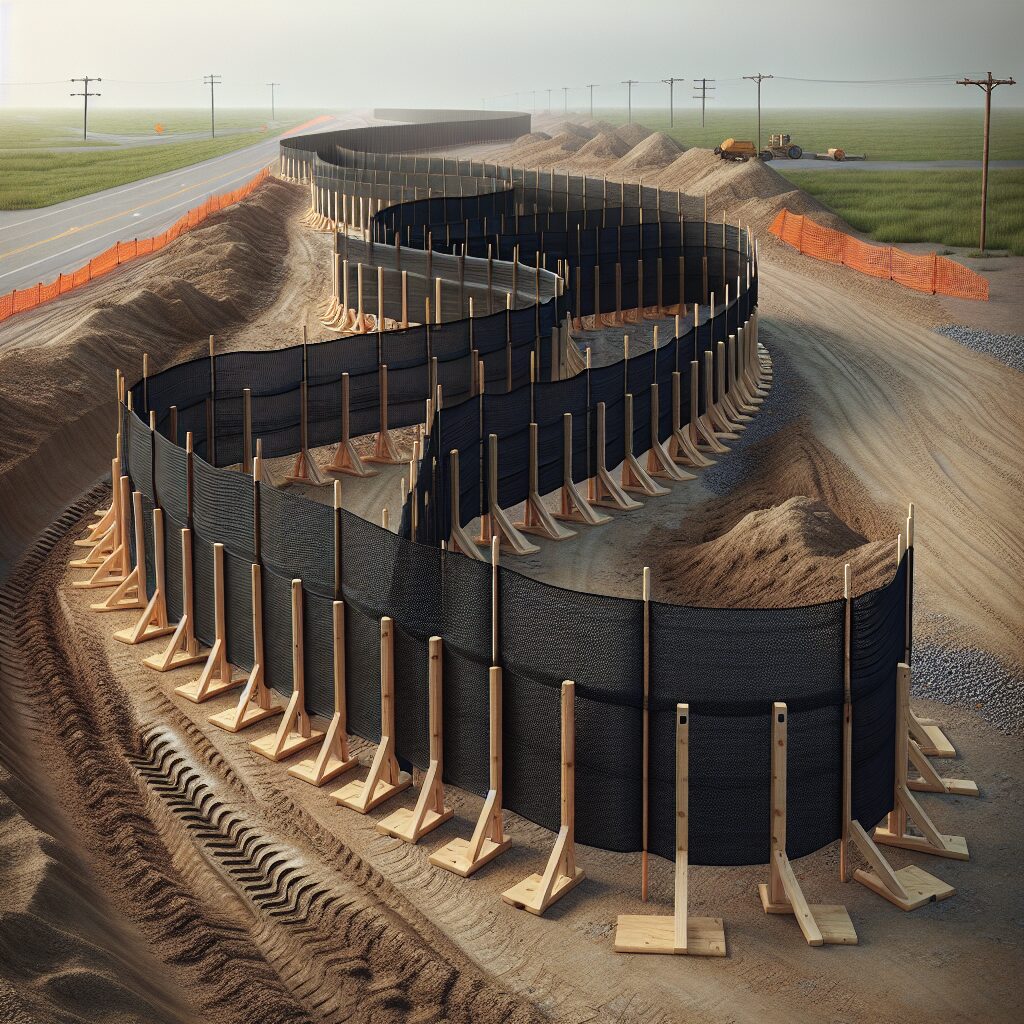
How Wooden Construction Stakes Improve Jobsite Efficiency
The Mechanics of Wooden Construction Stakes
Using wooden construction stakes effectively requires understanding their installation and application. Here’s how they work:
- Setting Up the Stakes: The first step is to determine the key locations that need marking. This can involve site plans, architectural drawings, or surveying data.
- Driving the Stakes into the Ground: Using a mallet or hammer, drive the stakes into the ground at the designated points, ensuring they are securely anchored.
- Aligning Reference Lines: Once the stakes are in place, strings can be stretched between them to create straight lines for framing, grading, or other layout needs. This provides a visual reference that enhances accuracy.
- Adjusting for Accuracy: If adjustments are needed, the stakes can be repositioned easily, allowing for flexibility in layout planning.
- Marking Boundaries: For projects involving property lines, wooden stakes serve as clear markers, helping to avoid disputes and ensuring compliance with zoning regulations.
Benefits of Using Wooden Construction Stakes
Wooden construction stakes offer numerous benefits that contribute to job site efficiency:
- Cost-Effectiveness: Wooden stakes are generally less expensive than metal or plastic alternatives, making them a budget-friendly choice for contractors.
- Durability: When properly treated, wooden stakes can withstand the elements, providing reliable performance on the job site.
- Versatility: Suitable for a wide range of applications, wooden stakes can be used in various construction fields, from residential building to large-scale civil engineering projects.
- Eco-Friendly Options: Many manufacturers now offer sustainably sourced wooden stakes, appealing to environmentally conscious builders.
- Ease of Use: Wooden stakes are lightweight and easy to transport, allowing for quick setup and removal as needed.
- Improved Accuracy: With the ability to establish clear lines and boundaries, wooden stakes help ensure that projects stay on track and within specifications.
Future Trends in Wooden Construction Stakes
As the construction industry evolves, so too do the methods and materials used. Here are some future trends regarding wooden construction stakes:
Advancements in Wood Treatment
New treatment methods are being developed to enhance the durability and longevity of wooden stakes. These advances aim to make wooden stakes resistant to rot, insects, and harsh weather conditions, ensuring they remain effective for longer periods.
Integration with Technology
The use of technology in construction is on the rise, and wooden stakes are no exception. Innovations such as GPS and digital surveying tools are being integrated with traditional marking methods, allowing for more precise layouts and efficient tracking of project progress.
Increased Focus on Sustainability
As sustainability becomes a focal point in construction, the demand for eco-friendly materials, including wooden stakes sourced from certified forests, will likely grow. This trend aligns with the broader movement towards reducing the environmental impact of construction practices.
Customization Options
Manufacturers are beginning to offer customizable wooden stakes, allowing contractors to select sizes, colors, and treatments tailored to their specific project needs. This customization can help streamline operations and enhance visibility on job sites.
Conclusion
In conclusion, the role of wooden construction stakes in improving job site efficiency cannot be understated. They provide a cost-effective, durable, and versatile solution for various construction applications, from marking boundaries to ensuring precise layouts. Their historical significance, current relevance, and potential for future advancements make them an essential tool for any construction professional.
As the industry continues to evolve, embracing sustainable practices and technological innovations will further enhance the utility and effectiveness of wooden stakes. By understanding their benefits and proper usage, contractors can significantly improve their project outcomes.
For more insights into maximizing efficiency with construction tools, check out our guide on how construction marking stakes enhance project accuracy.
This article aims to provide a comprehensive overview of wooden construction stakes and their impact on job site efficiency. With actionable insights and relevant internal links, readers can explore further and enhance their understanding of this essential tool in the construction industry.
Resource Links:
1. Construction Dive – Discusses the benefits of using wooden stakes for layout and marking, enhancing accuracy and efficiency on job sites.
2. JLC Online – Explores techniques for utilizing wooden stakes in construction projects to streamline processes and reduce errors.
3. Builder Online – Highlights the importance of wooden stakes in improving jobsite organization and workflow efficiency.


